Thibault Clérice
ALMAnaCH
KréyoLID From Language Identification Towards Language Mining
Mar 09, 2025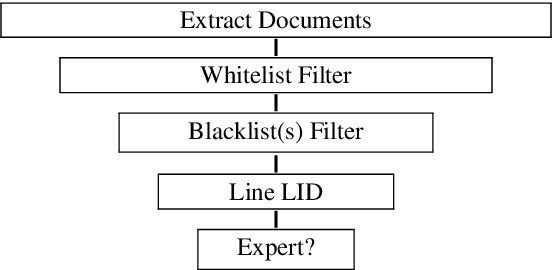

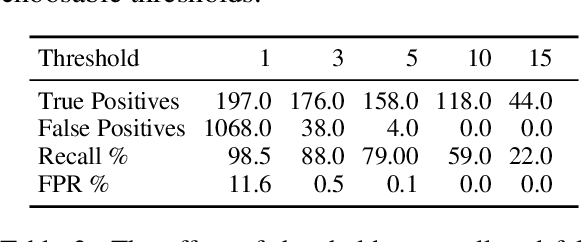

Abstract:Automatic language identification is frequently framed as a multi-class classification problem. However, when creating digital corpora for less commonly written languages, it may be more appropriate to consider it a data mining problem. For these varieties, one knows ahead of time that the vast majority of documents are of little interest. By minimizing resources spent on classifying such documents, we can create corpora much faster and with better coverage than using established pipelines. To demonstrate the effectiveness of the language mining perspective, we introduce a new pipeline and corpora for several French-based Creoles.
Diachronic Document Dataset for Semantic Layout Analysis
Nov 15, 2024



Abstract:We present a novel, open-access dataset designed for semantic layout analysis, built to support document recreation workflows through mapping with the Text Encoding Initiative (TEI) standard. This dataset includes 7,254 annotated pages spanning a large temporal range (1600-2024) of digitised and born-digital materials across diverse document types (magazines, papers from sciences and humanities, PhD theses, monographs, plays, administrative reports, etc.) sorted into modular subsets. By incorporating content from different periods and genres, it addresses varying layout complexities and historical changes in document structure. The modular design allows domain-specific configurations. We evaluate object detection models on this dataset, examining the impact of input size and subset-based training. Results show that a 1280-pixel input size for YOLO is optimal and that training on subsets generally benefits from incorporating them into a generic model rather than fine-tuning pre-trained weights.
Molyé: A Corpus-based Approach to Language Contact in Colonial France
Aug 08, 2024



Abstract:Whether or not several Creole languages which developed during the early modern period can be considered genetic descendants of European languages has been the subject of intense debate. This is in large part due to the absence of evidence of intermediate forms. This work introduces a new open corpus, the Moly\'e corpus, which combines stereotypical representations of three kinds of language variation in Europe with early attestations of French-based Creole languages across a period of 400 years. It is intended to facilitate future research on the continuity between contact situations in Europe and Creolophone (former) colonies.
Detecting Sexual Content at the Sentence Level in First Millennium Latin Texts
Sep 25, 2023Abstract:In this study, we propose to evaluate the use of deep learning methods for semantic classification at the sentence level to accelerate the process of corpus building in the field of humanities and linguistics, a traditional and time-consuming task. We introduce a novel corpus comprising around 2500 sentences spanning from 300 BCE to 900 CE including sexual semantics (medical, erotica, etc.). We evaluate various sentence classification approaches and different input embedding layers, and show that all consistently outperform simple token-based searches. We explore the integration of idiolectal and sociolectal metadata embeddings (centuries, author, type of writing), but find that it leads to overfitting. Our results demonstrate the effectiveness of this approach, achieving high precision and true positive rates (TPR) of respectively 70.60% and 86.33% using HAN. We evaluate the impact of the dataset size on the model performances (420 instead of 2013), and show that, while our models perform worse, they still offer a high enough precision and TPR, even without MLM, respectively 69% and 51%. Given the result, we provide an analysis of the attention mechanism as a supporting added value for humanists in order to produce more data.
You Actually Look Twice At it : using an object detection approach instead of region segmentation within the Kraken engine
Jul 19, 2022



Abstract:Layout Analysis (the identification of zones and their classification) is the first step along line segmentation in Optical Character Recognition and similar tasks. The ability of identifying main body of text from marginal text or running titles makes the difference between extracting the work full text of a digitized book and noisy outputs. We show that most segmenters focus on pixel classification and that polygonization of this output has not been used as a target for the latest competition on historical document (ICDAR 2017 and onwards), despite being the focus in the early 2010s. We propose to shift, for efficiency, the task from a pixel classification-based polygonization to an object detection using isothetic rectangles. We compare the output of Kraken and YOLOv5 in terms of segmentation and show that the later severely outperforms the first on small datasets (1110 samples and below). We release two datasets for training and evaluation on historical documents as well as a new package, YALTAi, which injects YOLOv5 in the segmentation pipeline of Kraken 4.1.
Corpus and Models for Lemmatisation and POS-tagging of Old French
Sep 23, 2021



Abstract:Old French is a typical example of an under-resourced historic languages, that furtherly displays animportant amount of linguistic variation. In this paper, we present the current results of a long going project (2015-...) and describe how we broached the difficult question of providing lemmatisation andPOS models for Old French with the help of neural taggers and the progressive constitution of dedicated corpora.
Stylometry for Noisy Medieval Data: Evaluating Paul Meyer's Hagiographic Hypothesis
Dec 07, 2020



Abstract:Stylometric analysis of medieval vernacular texts is still a significant challenge: the importance of scribal variation, be it spelling or more substantial, as well as the variants and errors introduced in the tradition, complicate the task of the would-be stylometrist. Basing the analysis on the study of the copy from a single hand of several texts can partially mitigate these issues (Camps and Cafiero, 2013), but the limited availability of complete diplomatic transcriptions might make this difficult. In this paper, we use a workflow combining handwritten text recognition and stylometric analysis, applied to the case of the hagiographic works contained in MS BnF, fr. 412. We seek to evaluate Paul Meyer's hypothesis about the constitution of groups of hagiographic works, as well as to examine potential authorial groupings in a vastly anonymous corpus.
Standardizing linguistic data: method and tools for annotating (pre-orthographic) French
Nov 22, 2020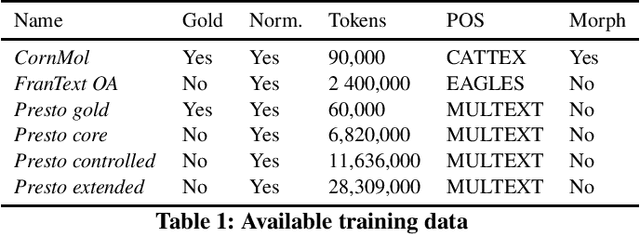
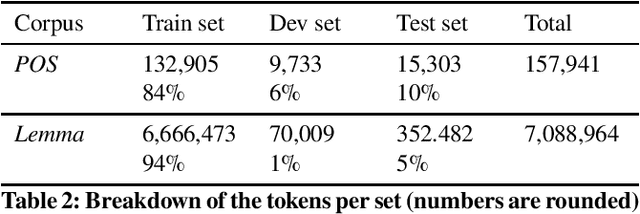
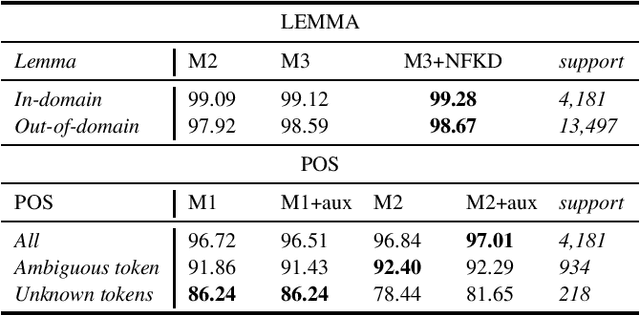

Abstract:With the development of big corpora of various periods, it becomes crucial to standardise linguistic annotation (e.g. lemmas, POS tags, morphological annotation) to increase the interoperability of the data produced, despite diachronic variations. In the present paper, we describe both methodologically (by proposing annotation principles) and technically (by creating the required training data and the relevant models) the production of a linguistic tagger for (early) modern French (16-18th c.), taking as much as possible into account already existing standards for contemporary and, especially, medieval French.
Corpus and Models for Lemmatisation and POS-tagging of Classical French Theatre
May 15, 2020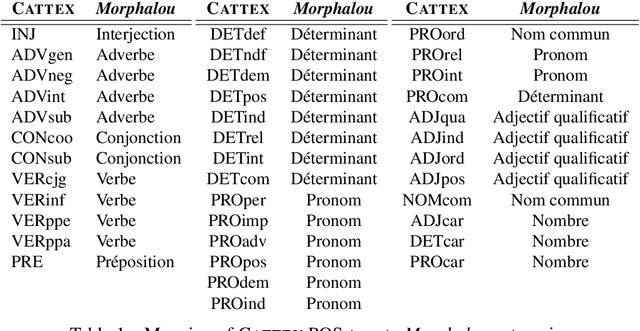
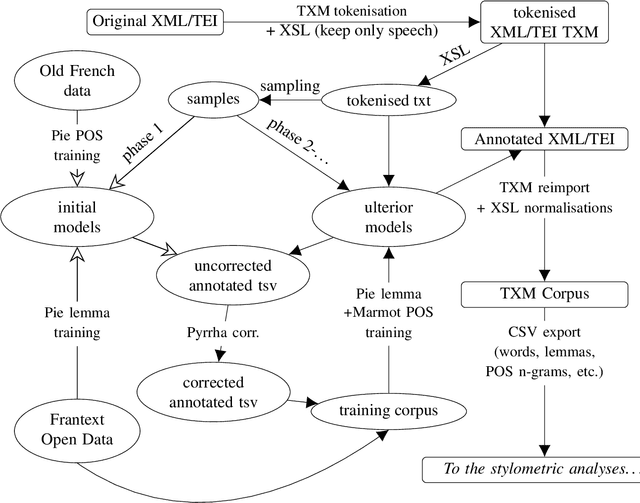
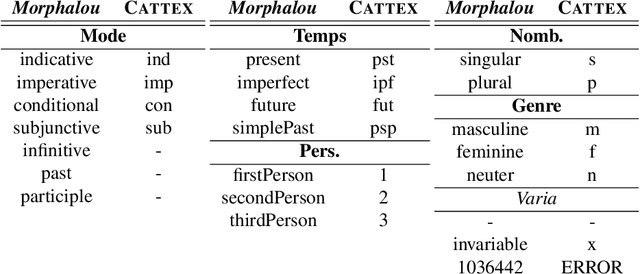
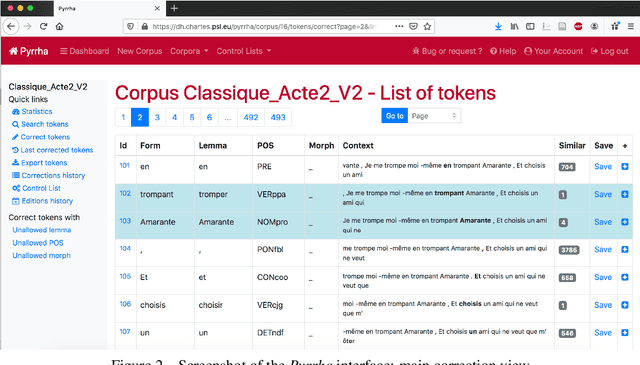
Abstract:This paper describes the process of building an annotated corpus and training models for classical French literature, with a focus on theatre, and particularly comedies in verse. It was originally developed as a preliminary step to the stylometric analyses presented in Cafiero and Camps [2019]. The use of a recent lemmatiser based on neural networks and a CRF tagger allows to achieve accuracies beyond the current state-of-the art on the in-domain test, and proves to be robust during out-of-domain tests, i.e.up to 20th c.novels.
 Add to Chrome
Add to Chrome Add to Firefox
Add to Firefox Add to Edge
Add to Edge